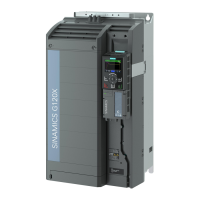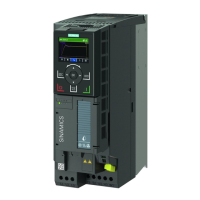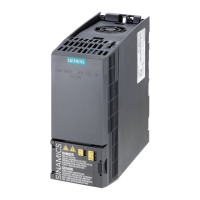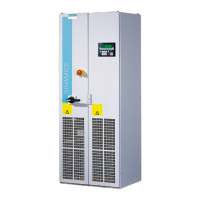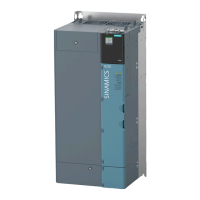Advanced commissioning
7.5 Motor control
Converter with control units CU250D-2
150 Operating Instructions, 04/2015, FW V4.7.3, A5E34261542B AB
Optimizing the speed controller
Optimum control response - post optimization not required
Preconditions for assessing the controller response:
● The moment of inertia of the load is constant and does not depend on the speed
● The inverter does not reach the set torque limits during acceleration
● You operate the motor in the range 40 % … 60 % of its rated speed
If the motor exhibits the following response, the speed control is well set and you do not
have to adapt the speed controller manually:
The speed setpoint (broken line) increases with the set ramp
-
The actual value follows the setpoint without overshooting.
Control optimization required
In some cases, the self-optimization result is not satisfactory or self-optimization is not
possible because the motor cannot rotate freely.
In these cases, you must optimize the closed-loop speed control manually. The following
parameters influence the response of the speed control:
-control scaling
Ratio between the total and motor moment of ine
rtia
Encoderless
speed control:
Speed control
with encoder:
p
Integration time (integral time) TI
Speed controller actual speed value smoothing time
Optimizing the speed controller
Requirements
● Torque precontrol is active: p1496 = 100 %.
● The load moment of inertia is constant and independent of the speed.
● The inverter requires 10 % … 50 % of the rated torque to accelerate.
When necessary, adapt the ramp-up and ramp-down times of the ramp-function
generator (p1120 and p1121).
● You have prepared the trace function in STARTER or Startdrive to be able to trace the
speed setpoint and the speed actual value.

